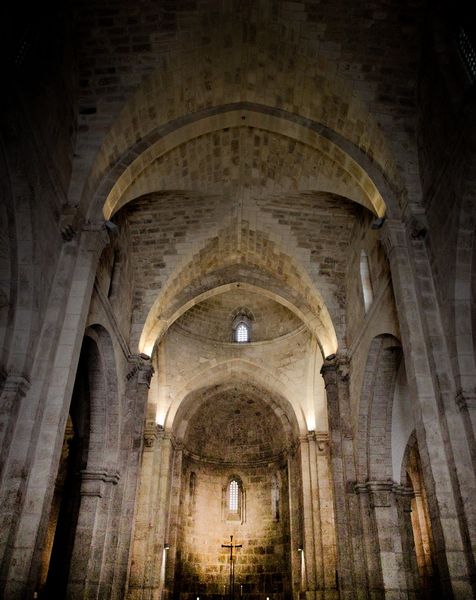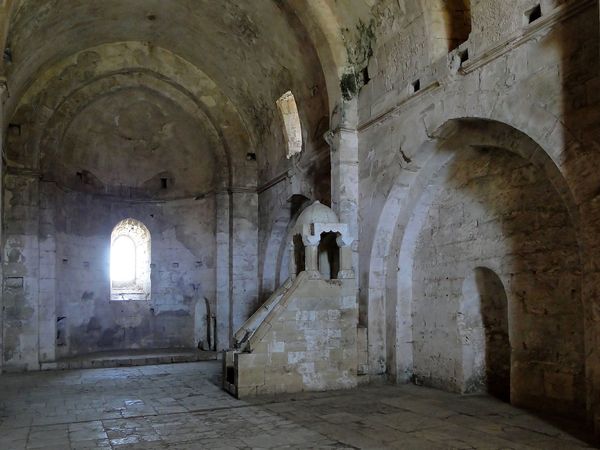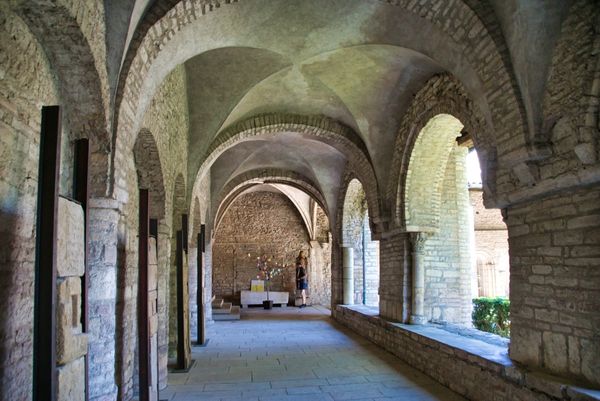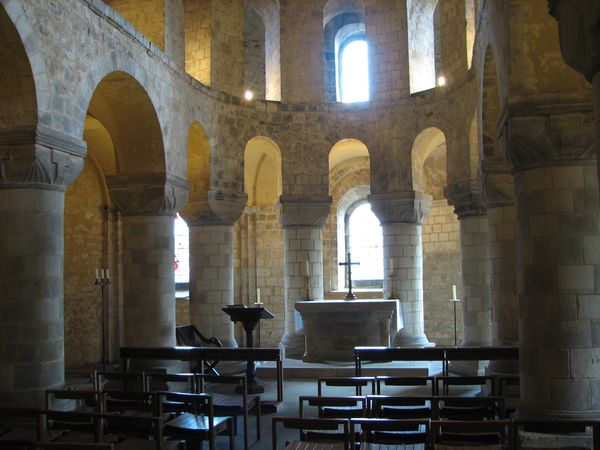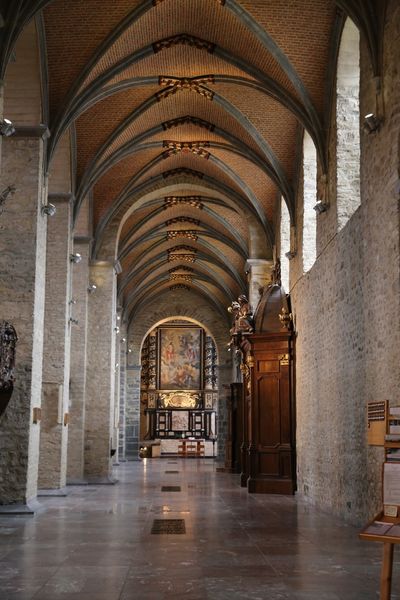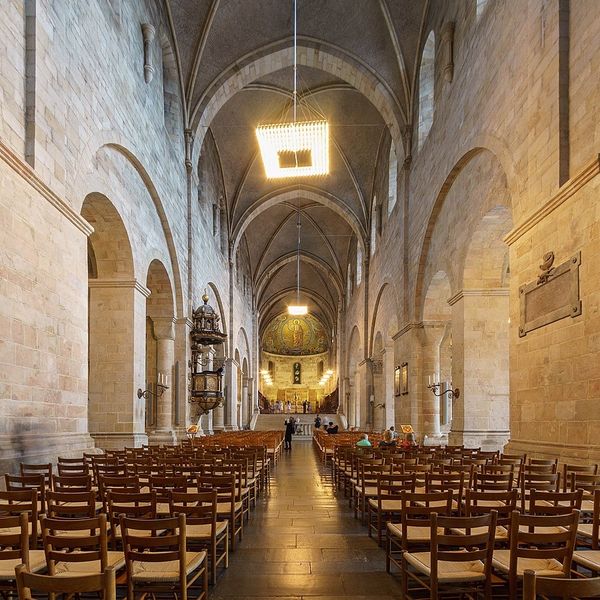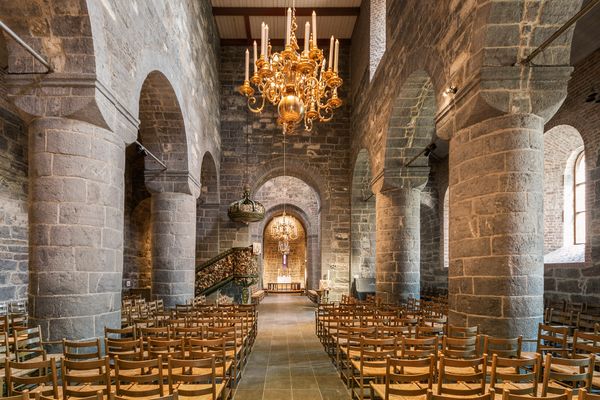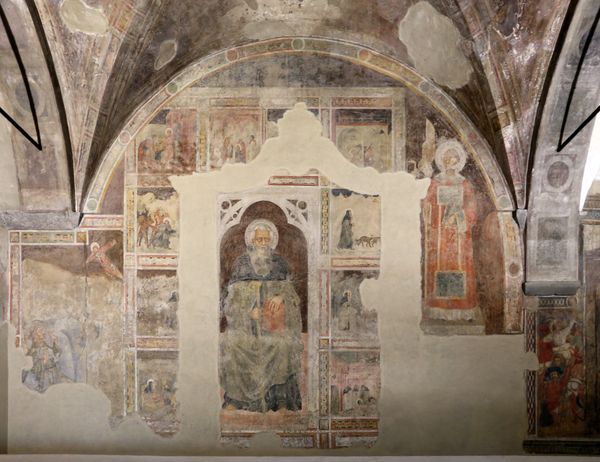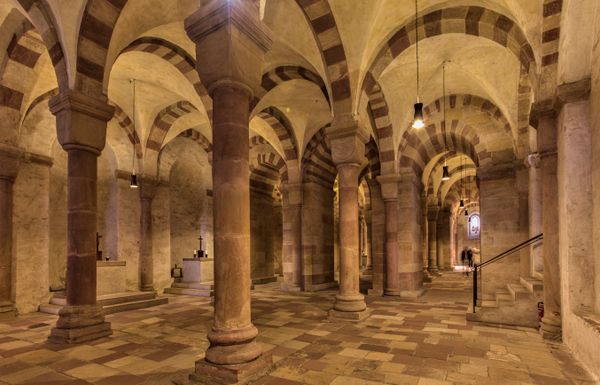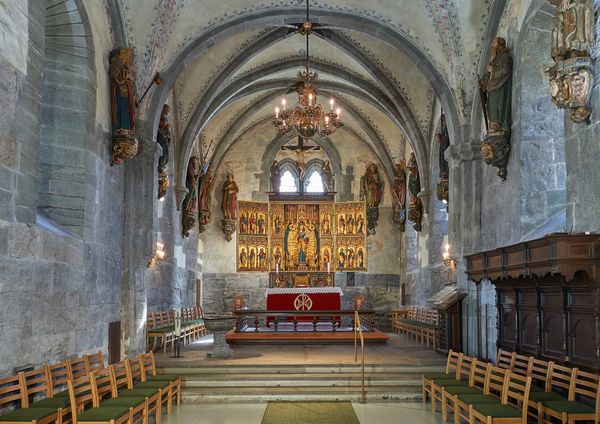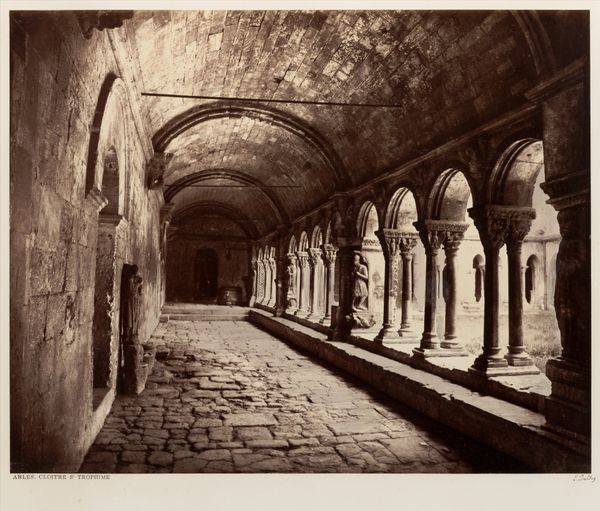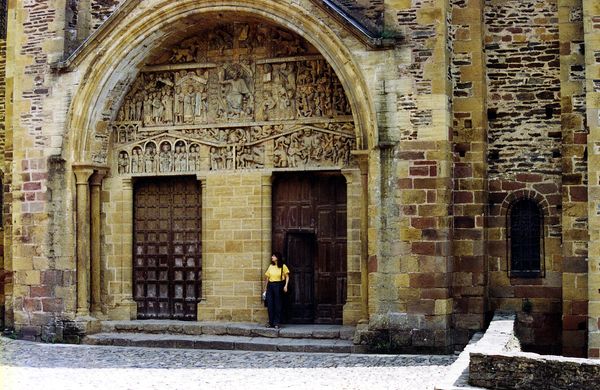
architecture
#
medieval
#
romanesque
#
architecture
Copyright: Public domain
Editor: We're looking at "Interior, Saint Nicholas Rotunda in Cieszyn, Poland," dating back to around 1180. The stone architecture gives it a remarkably austere, solemn atmosphere. What strikes you about this space? Curator: Its endurance. To stand for centuries is not neutral. Consider that this was commissioned at a time when Poland was fractured into duchies, and the church was a key political and social power, unifying populations under its ideology. The rotunda itself speaks to power, but more intimately—locally. This wasn’t meant for grand displays of papal might, but for the spiritual lives of the people of Cieszyn. Editor: How do the architectural choices support that local aspect? Curator: Notice the compact layout and relatively small scale, also, Romanesque architecture emphasized solid construction, which served defensive purposes as well. Does that potentially influence how we view its religious function, thinking about defence versus, perhaps, celebration? Editor: That's fascinating. It highlights the practical, grounded reality alongside spiritual life. So it's a statement about community survival as well as faith. I appreciate that it embodies this specific intersection of the church's influence and daily existence. Curator: Exactly. By examining the social function of the building and its influence in everyday lives we move beyond pure aesthetics and engage with the layers of cultural meanings inherent to the space.
Comments
No comments
Be the first to comment and join the conversation on the ultimate creative platform.

